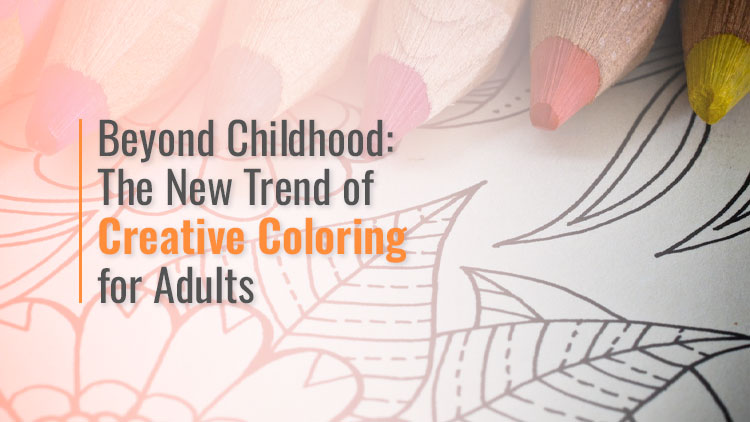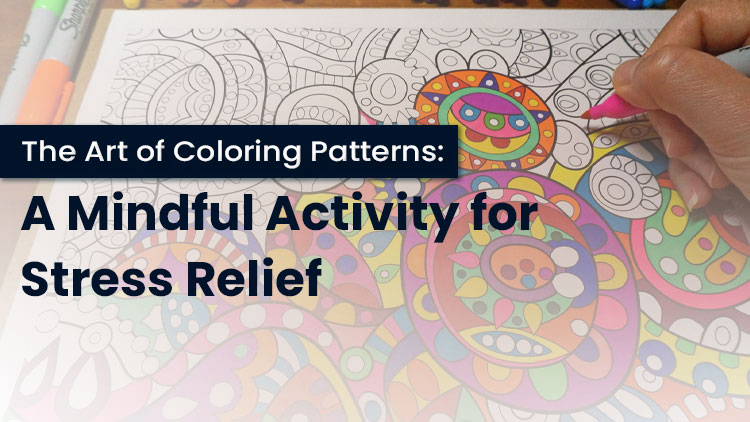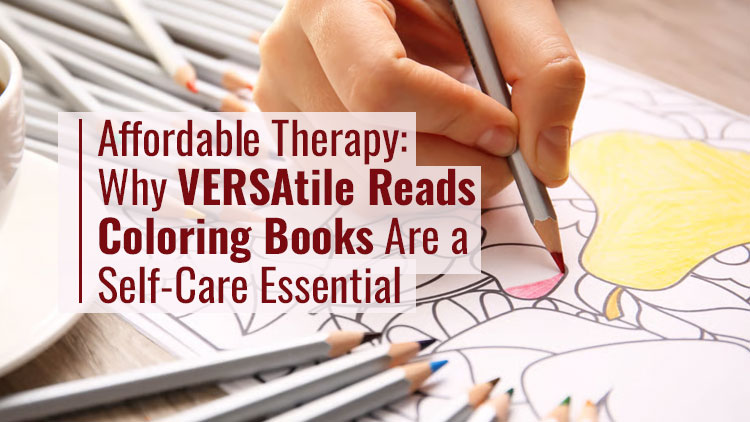
The Art of Coloring Patterns: A Mindful Activity for Stress Relief

Introduction
In today’s fast-paced, always-connected world, stress and anxiety have become an inevitable part of daily life. Balancing work, family, and personal responsibilities often leaves little time for self-care and relaxation. As a result, people are increasingly searching for simple, effective ways to reduce stress and improve mental well-being. One such method gaining popularity is the art of coloring patterns — an accessible, creative, and therapeutic activity that offers a mindful escape from life’s pressures.
Coloring patterns isn’t just a childhood pastime — it’s a powerful stress-relief tool that helps adults reconnect with their creative side while cultivating mindfulness. Whether it’s intricate mandalas, floral designs, or abstract shapes, coloring provides a calming and meditative experience that soothes the mind and nurtures the soul. This blog explores the profound benefits of coloring patterns for stress relief, the science behind their therapeutic effects, and practical ways to incorporate this mindful activity into your daily life.
Exploring mindful activities like coloring can be a great way to unwind and regain focus. If you’re looking for more ways to enhance your mindfulness journey, consider the coloring books by VERSAtile Reads that offer insights into creative relaxation techniques.
The Science Behind Coloring and Stress Relief
Coloring is more than just a creative outlet — it has well-documented psychological and neurological benefits. When we engage in coloring, our brain enters a relaxed state similar to meditation. This shift in focus helps reduce the production of cortisol, the hormone responsible for stress and increases the release of dopamine, a neurotransmitter associated with feelings of pleasure and satisfaction.
Studies have shown that coloring intricate patterns like mandalas or geometric designs activates the brain’s prefrontal cortex, responsible for problem-solving and emotional regulation. This helps improve focus and concentration while providing a break from overthinking and negative thoughts. The rhythmic, repetitive nature of coloring induces a state of flow, where the mind becomes fully immersed in the present moment, creating a sense of calm and balance.
Moreover, the visual stimulation provided by different colors can influence our moods and emotions. Warm colors like red, orange, and yellow can evoke feelings of energy and happiness, while cool colors like blue and green promote relaxation and tranquility. This combination of creativity and mindfulness makes coloring an effective and enjoyable stress-relief practice.
How Coloring Patterns Enhance Mindfulness
Mindfulness is the practice of being fully present and engaged in the current moment without judgment. It involves focusing on one task, observing thoughts and feelings without attachment, and cultivating a sense of inner peace. Coloring patterns naturally encourage mindfulness by requiring us to concentrate on shapes, colors, and designs.
As you choose colors and carefully fill in each section of a pattern, your mind becomes focused on the activity at hand. This shift in attention helps quiet the inner dialogue and reduces the tendency to dwell on worries or stressors. The repetitive motion of coloring also has a meditative quality, promoting relaxation and allowing you to enter a state of flow — where time seems to slow down, and external concerns fade away.
By engaging in mindful coloring, you create a space for self-expression and reflection. You become more aware of your emotions and thoughts without being overwhelmed by them. Over time, this practice strengthens your ability to stay present and manage stress more effectively in daily life.
Choosing the Right Coloring Patterns for Stress Relief
Not all coloring pages offer the same therapeutic benefits. The type of patterns you choose can significantly impact your relaxation experience. Here are some of the most effective designs for stress relief:
- Floral and Nature Designs: Patterns inspired by nature, such as flowers, leaves, and landscapes, have a soothing effect on the mind. The organic shapes and gentle curves of these designs evoke feelings of peace and connection with the natural world.

- Geometric Patterns: Structured and orderly, geometric designs provide a sense of stability and predictability. The repetitive shapes and symmetry create a calming visual rhythm, helping to quiet the mind and improve focus.

- Dessert-Themed Patterns – Intricate designs featuring cakes, cookies, and pastries can be visually stimulating and comforting. These patterns evoke happy memories and a sense of indulgence, which can provide emotional relief and relaxation.

- Winter-Themed Designs – Snowflakes, icy landscapes, and cozy winter scenes can transport the mind to a tranquil, serene setting. The cool, crisp imagery promotes relaxation and a sense of calm, making it perfect for unwinding during colder months.

Choosing patterns that resonate with you enhances the coloring experience, making it more enjoyable and effective for stress relief.
The Therapeutic Benefits of Coloring Patterns
Coloring patterns offer a wide range of therapeutic benefits beyond stress relief. Here are some of the key advantages:
- Improves Focus and Concentration: Coloring requires attention to detail and careful decision-making, which sharpens cognitive skills and enhances concentration. This focused activity trains the brain to stay engaged and mindful.
- Boosts Creativity: Selecting colors and experimenting with different combinations stimulates creative thinking. Coloring encourages self-expression and helps break free from routine thought patterns.
- Encourages Emotional Healing: Art therapy has long been used to help people process emotions and manage anxiety. Coloring provides a non-verbal outlet for expressing feelings, promoting emotional balance and well-being.
- Enhances Fine Motor Skills: The precise movements required for coloring improve hand-eye coordination and fine motor control. This benefit is particularly valuable for people recovering from injury or looking to maintain dexterity.
- Provides a Sense of Accomplishment: Completing a coloring page gives a tangible sense of achievement, boosting self-esteem and providing positive reinforcement.
How to Incorporate Coloring into Your Daily Routine
Integrating coloring into your daily routine doesn’t require a significant time commitment — just a few minutes a day can make a difference. Here are some practical ways to make coloring a regular part of your life:
- Morning Meditation: Start your day with 10–15 minutes of mindful coloring to set a calm, positive tone. This morning ritual helps you approach the day with clarity and focus.
- Lunch Break Relaxation: Use part of your lunch break to unwind with a quick coloring session. It’s a great way to recharge and return to work feeling refreshed.
- Evening Unwind Routine: End your day by coloring before bed to promote relaxation and improve sleep quality. The calming activity helps transition your mind from the day’s stresses to a state of rest.
- Creative Journaling: Combine coloring with journaling by adding patterns and designs to your journal entries. This creative approach enhances self-expression and reflection.
- Family Bonding Activity: Coloring isn’t just a solo activity — it’s a wonderful way to spend quality time with family and friends. Organize a coloring night where everyone can relax and express their creativity together.
Summary
The art of coloring patterns is a simple yet powerful tool for stress relief and mindfulness. By engaging in this creative activity, you can reduce anxiety, improve focus, and cultivate a sense of inner peace. Whether you prefer intricate mandalas, soothing floral designs, or freeform abstracts, coloring offers a unique opportunity for self-expression and relaxation. Make coloring a part of your daily routine and experience its transformative benefits for your mental and emotional well-being.
FAQs
1. Can adults benefit from coloring patterns?
Coloring is not just for children — it’s a highly effective stress-relief activity for adults. Many adult coloring books are designed with intricate, detailed patterns that promote relaxation and mindfulness. Engaging in coloring helps reduce anxiety, improve focus, and boost creativity.
2. How does coloring compare to meditation for stress relief?
Coloring and meditation share many similarities, as both encourage mindfulness and relaxation. However, coloring provides a more active, hands-on approach to achieving a meditative state. For those who find traditional meditation challenging, coloring offers an accessible alternative that engages the mind and soothes the body.
3. What materials do we need to start coloring for stress relief?
Starting a coloring practice is easy and requires minimal supplies. You’ll need a coloring book or printable patterns, along with colored pencils, markers, or crayons. High-quality materials enhance the experience, making the colors more vibrant and the process more enjoyable.
- Published Date:



